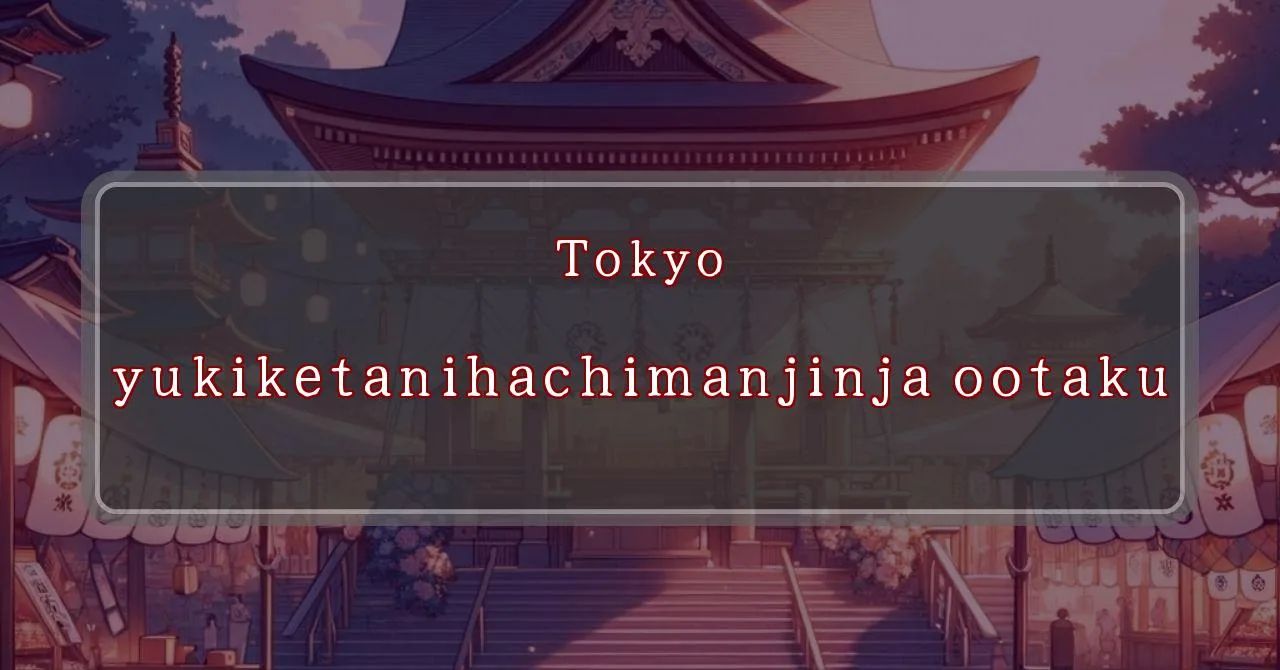Enchanting shrine festival with vibrant lights and lively performances
Basic Information
Yukigaya Hachimangu Shrine is a Shinto shrine located in Ota Ward, Tokyo, Japan. It is dedicated to the deity Hachiman, the god of war and agriculture.
- Address: 2-25-1 Yukigaya Higashi, Ota-ku, Tokyo 145-0065
- Phone Number: 03-3728-0753
- Access: 2-minute walk from Ishikawadai Station on the Tokyu Ikegami Line
- Festival Days: Mid-September (Saturday and Sunday), 2024
Main Events and Attractions of the Festival
The Yukigaya Hachimangu Shrine Festival is a lively and colorful event that attracts many visitors each year. The festival features a variety of events and attractions, including:
Mikoshi Procession
One of the highlights of the festival is the mikoshi procession. A mikoshi is a portable shrine that is carried through the streets by a team of people. The mikoshi is believed to be the temporary dwelling place of a deity, and the procession is a way to show respect to the deity and to ask for blessings.
Kagura Performance
Kagura is a traditional Japanese dance and music performance that is often performed at Shinto shrines. The kagura performance at the Yukigaya Hachimangu Shrine Festival is a beautiful and graceful way to learn more about Japanese culture.
Food Stalls
No Japanese festival is complete without food stalls! At the Yukigaya Hachimangu Shrine Festival, you can find a variety of delicious food to enjoy, from traditional Japanese dishes to more modern fare.
Games and Activities
There are also a number of games and activities for children and adults to enjoy at the festival. These include traditional Japanese games like ring toss and goldfish scooping, as well as more modern games like face painting and balloon animals.
Fireworks Display
The festival concludes with a spectacular fireworks display. The fireworks light up the night sky and create a magical atmosphere.
Blessings and Deities
Yukigaya Hachimangu Shrine is dedicated to the deity Hachiman, the god of war and agriculture. Hachiman is one of the most important deities in the Shinto religion, and is worshipped at shrines all over Japan. He is said to be the protector of the Japanese people and the guardian of the nation.
- Deity: Hachiman, the god of war and agriculture
- Significance: One of the most important deities in the Shinto religion
- Protection: Believed to protect the Japanese people and guard the nation
Origin and History
The origins of Yukigaya Hachimangu Shrine are unclear, but it is believed to have been founded in the 16th century. The shrine was originally located in a different part of Ota Ward, but it was moved to its current location in 1959.
- Establishment: Believed to be in the 16th century
- Original Location: Different part of Ota Ward
- Relocation: Moved to current location in 1959
Tips and Notes for Visitors
Here are some tips and notes for visitors to the Yukigaya Hachimangu Shrine Festival:
- Wear comfortable shoes, as you will be doing a lot of walking.
- Bring a camera to capture the beautiful sights and sounds of the festival.
- Arrive early to get a good spot to view the mikoshi procession and other events.
- Be respectful of the shrine and its customs.
- Enjoy the festival and all that it has to offer!
Parking Information
There is limited parking available at the Yukigaya Hachimangu Shrine. Visitors are encouraged to use public transportation or park in nearby streets.
- Limited parking available at the shrine
- Use public transportation or park in nearby streets
Popular Stalls and Food Carts in Recent Years
| Type of Stall | Description |
|---|---|
| Takoyaki | A staple at Japanese festivals. Characterized by a crispy outside and a creamy inside. |
| Jaga Butter | A simple yet popular snack of hot potatoes lavishly topped with melted butter. |
| Baby Castella | Small castella cakes, sweet and fluffy treats enjoyed by children and adults alike. |
| Grilled Ayu with Salt | Fresh ayu fish grilled whole with salt, a savory taste of Japanese summer. |
| Shaapin | A unique gourmet item influenced by foreign cuisine, with a chewy skin wrapping the filling. |
| Okonomiyaki | A Japanese grilled dish where you often choose your own ingredients for a personalized flavor. |
| Cotton Candy | A fluffy, sweet snack that’s extremely popular with children. |
| Chocolate Banana | A banana coated in chocolate, a fun and visually appealing dessert. |
| Kushiyaki | Various types of ingredients skewered and grilled, an easy-to-enjoy snack. |
| Yakisoba | Fried noodles mixed with a special sauce, a fast food favorite in Japan. |



